The Domus Aurea on Colle Oppio, built on land confiscated by Nero after the infamous fire of 64 A.D, was part of a complex spanning 80 hectares. Overlooking four hills with beautiful gardens and a valley featuring an enormous artificial lake (where the Colosseum now stands), the Golden House undeniably demonstrated grandeur and opulence.
The Domus Aurea itself, also known as the Golden House (domus referring to house and aurea gold), totaled 16,000 square meters, equivalent to 3 football fields, and had many atriums and courtyards that allowed natural light to flood in. Its walls and ceiling decorated with frescoes and stuccoes covered an area of about 30,000 square meters, making that about 30 times larger than the Sistine Chapel.
The magnificent and opulent palace, however, only stood for 4 years until the death of Nero in 68 A.D, when future successors did all they could to erase any memory of Nero. And it is thanks to Emperor Trajan, who had filled in and covered up the Domus Aurea to serve as the foundation of the Baths of Trajan, that this palatial building has been preserved.
It wasn’t until the Middle Ages that the site was accidentally discovered again when a man fell through a hole and found him in a “cave” filled with stunning frescoes. As a result, the frescoes were called grotesques, deriving from the word grotta meaning cave in Italian.
This new discovery caused excitement among some artists of that period such as Raphael and Pinturicchio who lowered themselves down with ropes to take inspiration from the frescoes for their own work. Unfortunately, the exposure of the frescoes to the elements has caused extensive discolouration.
Today, sitting beneath a garden Colle Oppio, the Domus Aurea faces a precarious situation as the weight of the garden above places an excessive amount of stress on its supporting structures, and roots of the trees have snaked below and tangled itself into the walls. And when it rains the added weight, as much as 30% more, causes even more strain to the already delicate structure.
Over the years the challenge has been to trying to resolves these issues, and after 10 years of extensive consolidation work to reinforce the structure of the building, the Domus Aurea reopened to the public last October and will remain open until August 30. Visits take place only on weekends as this is still an ongoing working site where you’ll see and during your visit, you are required to use the hard hats provided.
Tickets for a guided tour of the Domus Aurea can be purchased online and costs €12 (€10 + €2 reservation fee). Guided tours, are held in Italian, English, and Spanish and often sold out a few weeks ahead of time. So if you are planning to visit, it is highly recommended that you book it way in advance.
Visit to the Domus Aurea
Today an archaeological site, only with traces of frescoes left adorning the walls, it’s nevertheless easy to imagine the grandeur of the Domus Aurea from the architecture alone. As we stepped into the first room to start our 90-minute guided visit with an archaeologist, we were in awe at the height of the ceiling which was about 10-12 meters high, a sign of what was to come.
In a group of about 20 people, our guide first briefed us on the layout of the Domus Aurea pointing out on a map the east and west wings of the building. She also informed us that due to heavy rain a few days before, some rooms were off-limits for safety reasons.
Our visit took us mainly through the east wing, with our guide pointing out details of remaining frescoes and mosaics as she led us to the Golden Vault, Crytoporticus, a long hidden passage, and eventually to the highlight of the visit, the remarkable Octagonal room featuring a spectacular dome with an aperture.
The room was once covered with slabs of marble and in one of the radial rooms, there is evidence of a structure for a waterfall. Our guide explained that they have yet to determine the purpose of the room though we could easily imagine extravagant parties taking place here.
If you are in Rome before August 30, it’s a must-see and an opportunity not to miss as we don’t know when they will re-open the Domus Aurea again after that date. Here is more information on how to book your visit to the Domus Aurea and for those interested in the developments of the conservation project, the Ministry of Cultural Heritage and Activities has a website with updates on worksite of the Domus Aurea.
 BrowsingRome Blogging about my experiences and sharing my thoughts about Rome, Italy and beyond
BrowsingRome Blogging about my experiences and sharing my thoughts about Rome, Italy and beyond
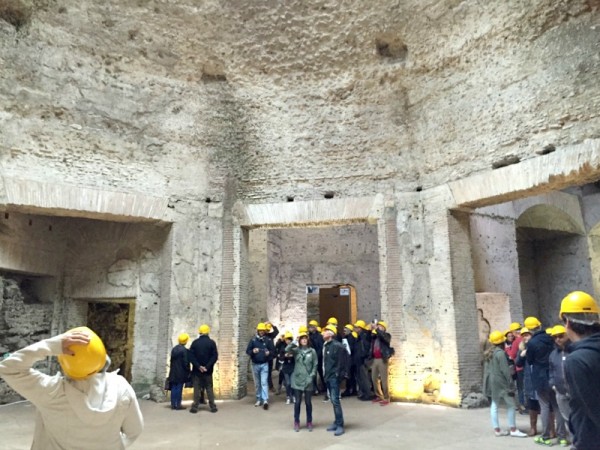
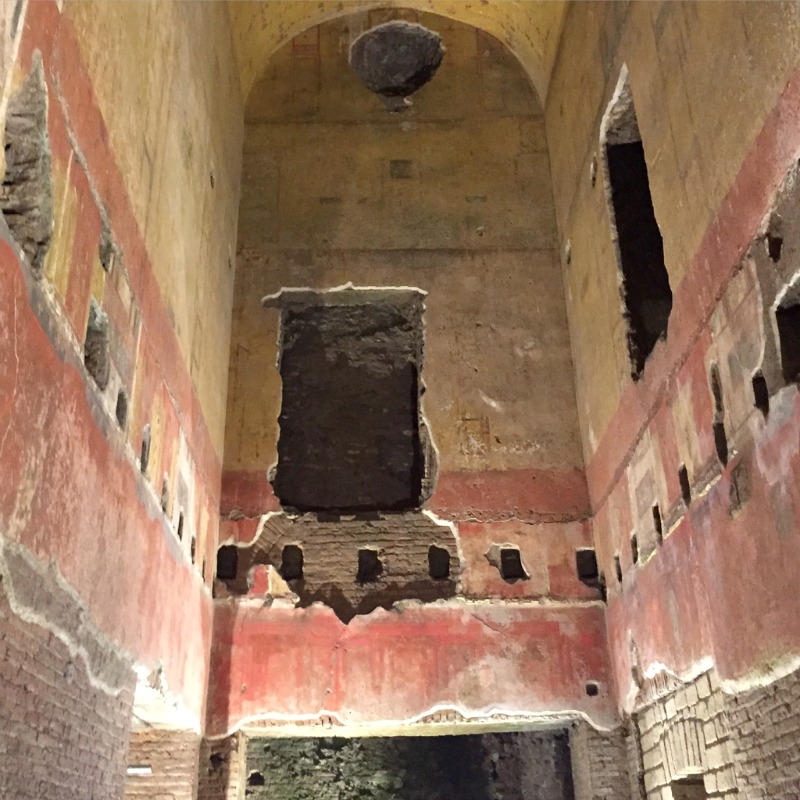
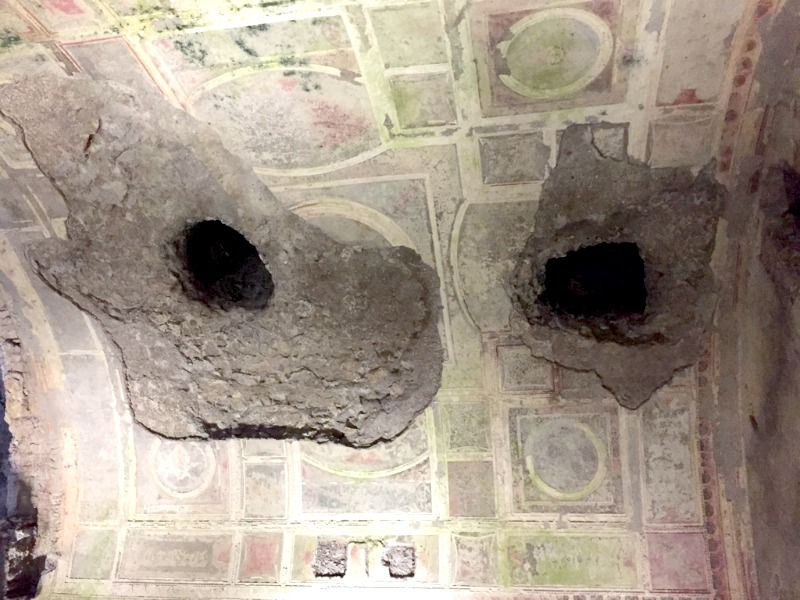
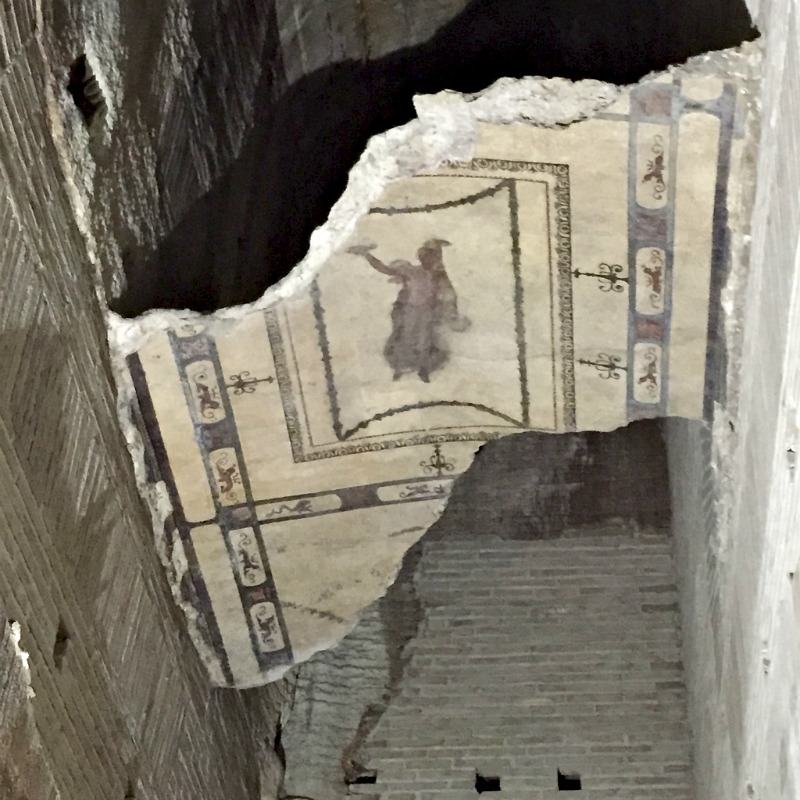
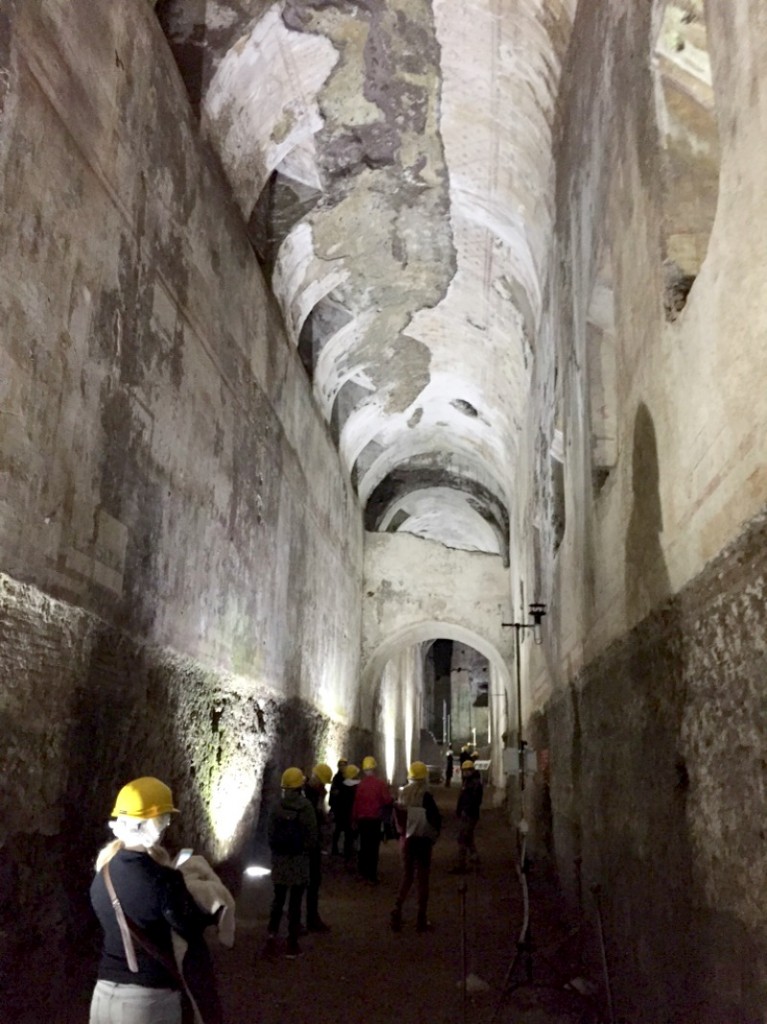
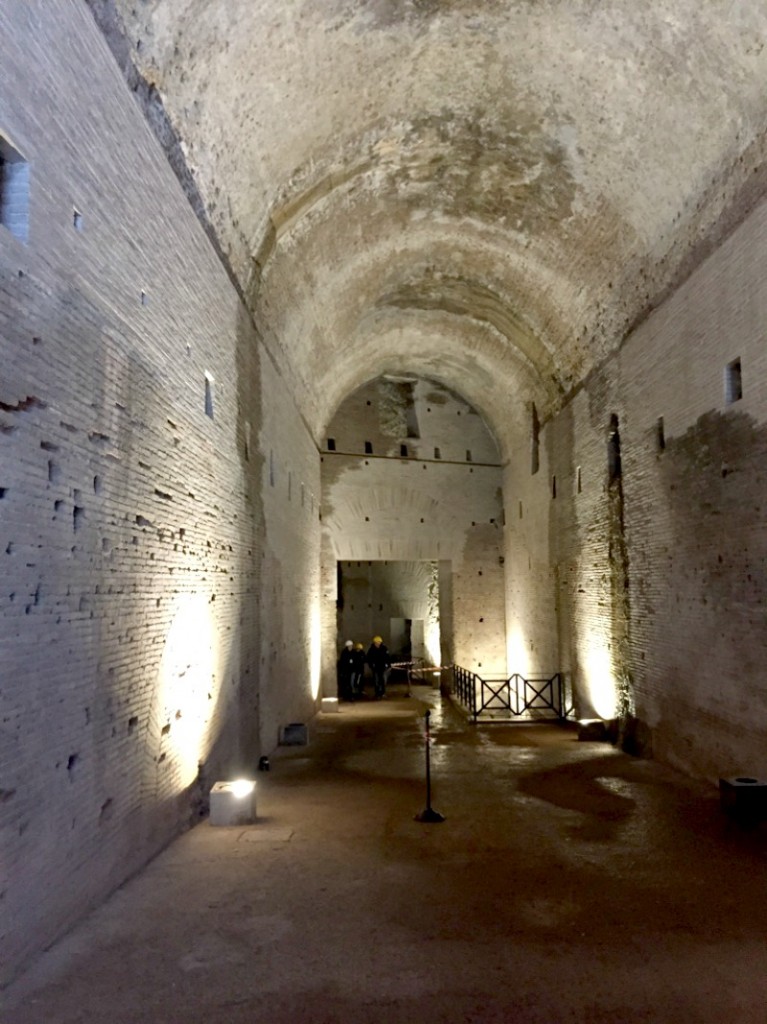
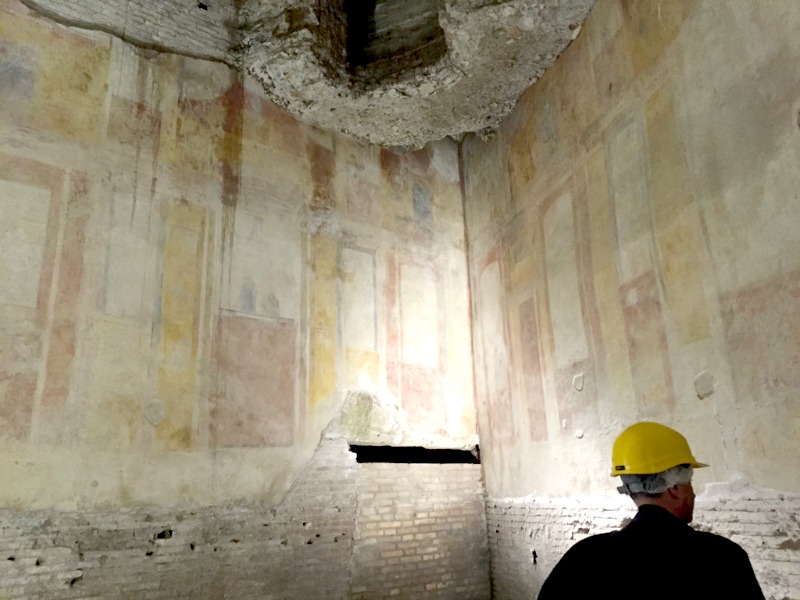

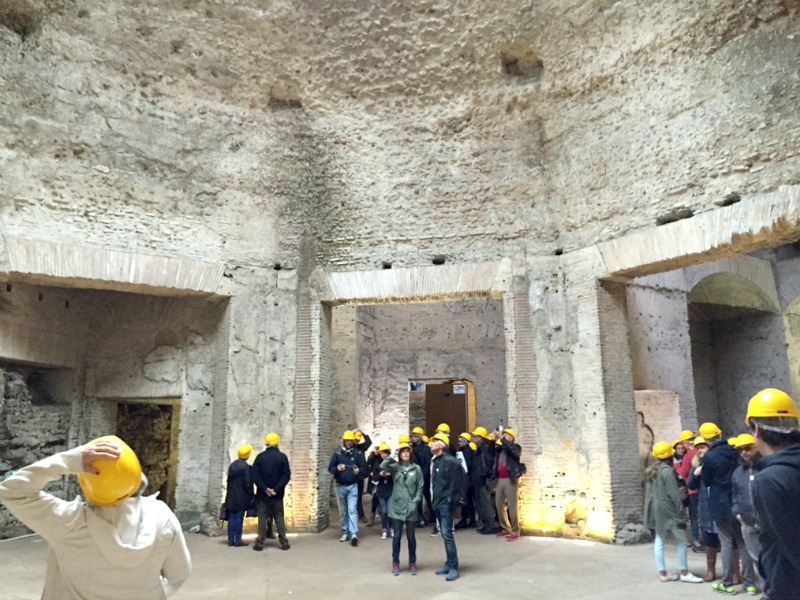
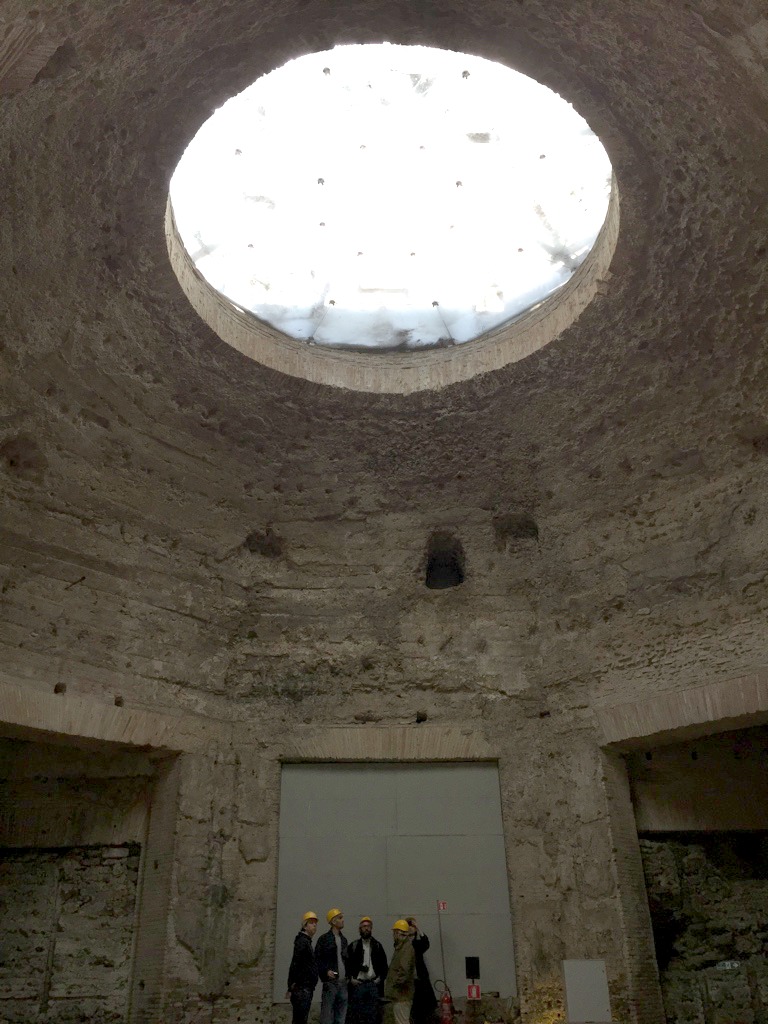
Thank you so much for posting this! My family will be in Rome in early June and I would love to visit this.
Hi Carolyn, it would be worth a visit and pretty fascinating. As mentioned in the post, book early if you can. Have a great time in Rome